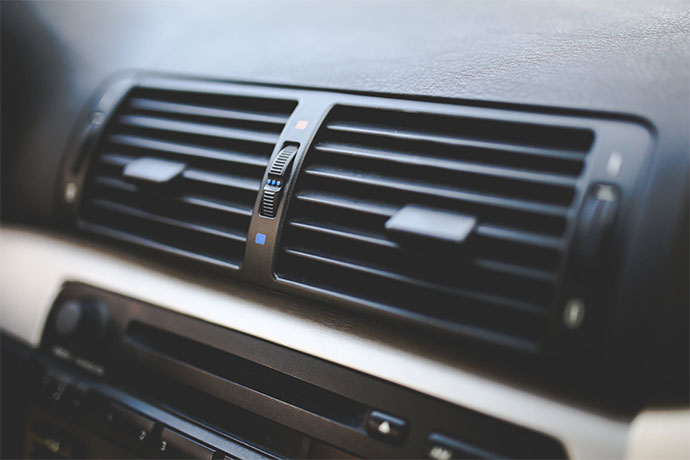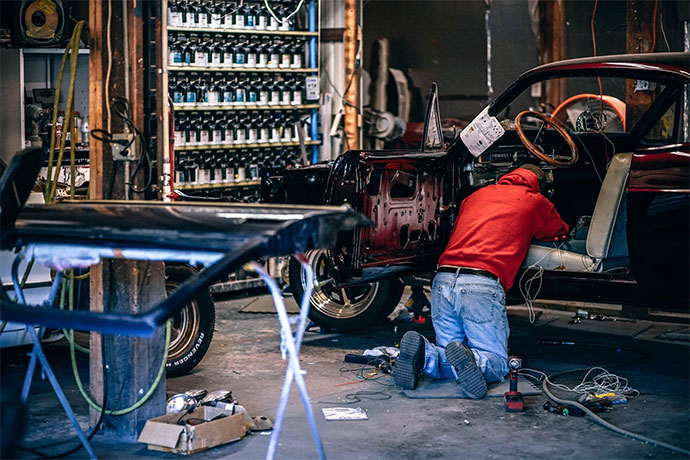We’ve seen an article outlining 5 car air conditioning mistakes circulating online. While accurate, it’s left out a few equally important things. Here’s a much more complete list of what to avoid when using your car’s air conditioning system. Following this will ensure fewer trips to your local car air conditioning service.

Table of Contents
1.) Keeping the windows open to save on gas
If you’re driving a car that was designed in the last 30 years, chances are that it was designed to be its most fuel efficient with the windows closed. The odds are that the aerodynamic drag from having windows open and aircon off will cause your fuel consumption to rise more than keeping your windows closed and your aircon on.
2.) Not letting the thermostat do its work
Modern thermostats are great pieces of technology that can significantly extend the service life of your car air conditioner, reduce your fuel consumption, and keep you comfortable all at the same time. There really is no need to set your car’s aircon at full blast every single time you drive. A thermostat can be an excellent way to get the most use out of your air conditioner – but only if you trust it.
3.) Overusing the “recirculation” function
The recirculation function can be a good way to quickly cool the air in your cabin. But if you’re already comfortable, be sure to turn it off, so that you get a more consistent temperature throughout your car.
4.) Setting it at full blast immediately after getting in
It’s usually better for your air conditioner if you drive with the windows open for just a short bit before turning it on. This is a much more effective way to dump hot air out of the cabin than relying on the much small air conditioner intakes. When the cabin cools off enough, then you can close the windows and turn on the air conditioner.
5.) Only turning it on when it’s hot outside
Air conditioners are critical to occupant safety in cool and humid climates, where condensation can easily build up and obscure the driver’s vision. Keeping the air conditioner on even when it’s cool outside can prevent this from happening and keep you from meeting a serious accident.
6.) Not aiming the ducts upwards
You will get a much more optimal distribution of cold air if you keep the ducts pointed upwards. Hot air tends to rise and cold air tends to sink. By pointing the cold air up, you ensure that the whole cabin is kept cool – and not just your legs.
7.) Maintaining it regularly
Even well-built air conditioners on luxury cars will suffer some wear and tear due to the fact that any air conditioner system has multiple moving parts. They can also lose a bit of refrigerant gas. Not enough to keep them from working, but enough that your aircon compressor and your engine will have to work harder to deliver the same performance. This loss in performance is usually worse on older vehicles as well as on more budget-minded models. Unmaintained air conditioners can also blow out harmful fungi and bacteria right into your cabin.
For these reasons, it’s critical to use car aircon cleaning services regularly to clean out filters and check your system’s seals regularly, as well as to have your aircon or climate control system checked with everything else during your car’s annual checkup.
Can a car use more petrol when the windows are open and with the aircon on?
Absolutely. Turning on the air conditioner will absolutely make your car use more petrol, regardless of whether or not the window is open.
What you might be surprised to find out is that newer cars will actually consume more fuel from having open windows than they would from just having the aircon on, alone.
Today’s cars are designed to perform their best with closed windows in mind. Open windows can significantly raise the drag coefficient of your car, making the engine work harder to achieve the same performance it would get with closed windows. Combined with an air conditioner that’s turned on, this can mean even greater fuel consumption.
What does a car’s air conditioner compressor do?
An aircon compressor squeezes the refrigerant gas in the system into a liquid, which is then used by other parts of the air conditioner to transfer heat from the car’s cabin to the outside where it’s dissipated, thus simultaneously cooling the interior and removing humidity.
It’s typically the most complex and expensive part of any air conditioning system. Because of the multiple moving parts, it has to be checked and serviced regularly, depending on the manufacturer’s recommendations.
For more info, be sure to check out the car air conditioning service Welshpool drivers trust.













